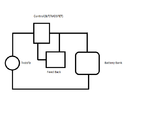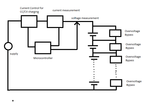btahir90
Junior Member level 2
Hello!
I am planing to make a high voltage battery from 3.6V Lithium ion batteries.
The problem is i want to protect individual cell from over voltage protection. Thinking to use Zener diode but its two lossy and will create short circuit effect.
I want some circuit that allows battery only that current which keeps it in voltage limits, I mean circuit detects voltage and limit current flowing towards battery.
I am planing to make a high voltage battery from 3.6V Lithium ion batteries.
The problem is i want to protect individual cell from over voltage protection. Thinking to use Zener diode but its two lossy and will create short circuit effect.
I want some circuit that allows battery only that current which keeps it in voltage limits, I mean circuit detects voltage and limit current flowing towards battery.

